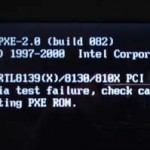Hotlinking, also known as deep linking, occurs when one web site links directly to graphics files on another web site. The site which serves the images pays for the bandwidth. The site which links to the images gets free content for its users. Many webmasters object to being hotlinked to, but hotlinking is difficult to prevent. Preventing Hotlinking with Apache On an Apache web server, you can use mod_rewrite and .htaccess to prevent any web page other than your own from accessing your graphic images. Your .htaccess rule to block Read More
JavaScript Redirect

A JavaScript redirect can be used to redirect a visitor from one webpage to another. This could be your site moving to a new domain. Some download sites have a time delay during redirections, which is basically the JavaScript redirect in action. If you are having some external servers mirror your site for you, you would need JavaScript redirect. Implementing the JavaScript Redirect First open up your HTML page (most often the index.html) and within the tags, place the following code: <script type=”text/javascript”> <!– window.location = “http://www.byteguide.com” //–> </script> Note Read More
How to Delete Deleted Files Permanently

Contrary to popular belief, deleting files from the Recycle Bin does not completely remove the file from the computer. Instead, deleting a file simply tells the computer that the memory it was using is no longer needed. When the computer needs the memory for other files, it overwrites the original information. However, until the file is overwritten with new data, it remains on the computer under a different name and can be restored using file recovery software. In order to completely remove a file, it is important that new data Read More
PCMCIA
PCMCIA stands for Personal Computer Memory Card International Association, an international standards body and trade association based in San Jose, California. Founded in 1989, PCMCIA aimed to create a standard for connecting peripherals to portable computers. PCMCIA developed the PC Card. PC Card or PCMCIA Card PC Cards are credit card sized removable devices designed to add extra functions to portable computers. Introduced in 1990, the cards were first known as PCMIA cards as the original standards were established by the Personal Computer Memory Card International Association. PC Cards are Read More
Types of Network Hardware
The label network hardware is generally given to any piece of equipment with the task of moving data. Common categories of network hardware include: Routers Switches Network Interface Cards Routers A router is a network device with interfaces in multiple networks whose task is to copy packets from one network to another. Routers operate at Layer 3 of the OSI Model, the Network Layer. A router will utilize one or more routing protocols to create a routing table. The router will then use the information Read More
DES (Data Encryption Standard)

DES (Data Encryption Standard) is a symmetric cipher defined in Federal Information Processing (FIPS) Standard Number 46 in 1977 as the federal government approved encryption algorithm for sensitive but non-classified information. DES was developed by IBM and was based upon IBM’s earlier Lucifer cipher. DES utilizes a 56-bit key. This key size is vulnerable to a brute force attack using current technology. Triple DES A variant of DES, Triple DES, provides significantly enhanced security by executing the core DES algorithm three times in a row. The has the effect of Read More
Multi-Search Engines

A multi-search engine combines many search engines into one unified search engine. It is a fast and comprehensive way of casting a wide net on the Word Wide Web. There are thousands of search engines on the Internet. Although some are quite good, none of them is comprehensive. Some may use a small database to create your result set, some may not be updated regularly, and still others may be quite slow. Thus, you may need to use several search engines to ensure an all-inclusive search result. Multi-Search engines may Read More
How GPS Tracking Works
GPS – A Short Introduction GPS, which stands for Global Positioning System, is a satellite navigation system that can ascertain the latitude and longitude of a GPS receiver device on the Earth. The GPS consists of more than two dozen global positioning satellites orbiting the earth. Each satellite transmits radio signals, which can help determine the location, speed and direction of travel of users equipped with GPS receivers. To ensure that the whole world is covered by the constellation of the GPS satellites, they are so arranged that four satellites Read More
What is a Dial-Up Connection?
A dial-up connection is any connection that is connected through a regular phone line. When that phone line is connected to a modem and then configured to dial a specific number, a user can access the Internet. It is the slowest form of Internet connection, but that is a result of also being the most inexpensive–if not free–form of Internet access available to users. According to a Pew Internet and American Life Project conducted in 2008, only about 10% of Americans were still using dial-up either because of remoteness or Read More
How to Solve “PXE-E61 Media Test Failure, Check Cable” Error

PXE (Preboot eXecution Environment) is a boot environment that Intel created. The PXE allows a workstation to boot up by using a network interface before it boots the operating system from the local storage devices such as the hard disk. When hard disk boot failure occurs, the computer will not boot up and a message saying “PXE-E61: Media Test Failure, Check Cable” appears. The error may also read “PXE-M0F: Exiting Intel PXE-ROM” or “Boot Failure: System Halted.” This error message repeats each time one attempts to start up the computer Read More


Share on: